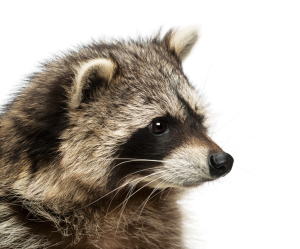Q. Last fall, we had a problem with raccoons as they tore up the lawn to feast on the grubs. I’d like to discourage the raccoons early on this year. Is there an easy way to tell if the lawn grubs have returned?
A. Grubs are immature beetles found in the ground, and are usually white in color. As the grubs mature, they begin to feed on the grass roots, killing patches of the lawn in the process. The damage is visible from late summer through the fall. The damage normally starts next to cement or a hot concrete edge and quickly spreads outwards toward the center of the lawn. The dead grass easily peels off the soil surface exposing the grubs. Grubs can still be present in undamaged grass; hence the raccoons return. There is a simple test for the presence of grubs using detergent and water. With stakes and string, mark off two by two foot squares. Mix two tablespoons of a liquid soap or detergent in a bucket of water and pour the solution evenly over the areas. I’d set up several test sites. The sites can be any area where the turf has turned brown and a normal area. Keep a close eye on the surface for the next ten to fifteen minutes. The detergent agitates the grubs forcing them to the soil surface. Typically, more than five grubs per quarter-square foot warrants treatment. The organic solution for grubs is to apply Beneficial Nematodes. Beneficial Nematodes kill all the soil insects except earthworms. They’re applied with a tank sprayer. Beneficial Nematodes done early on will rid the area of all the soil insects and force the raccoons to look elsewhere for a new food source. Another solution is Bayer Season Long Grub Control. It can be applied as early as May or June and provides grub control over an extended period of time. Both these products do not provide immediate results but takes seven to ten days for them to be effective. Unfortunately, the raccoons can do a lot damage in that time period so it’s suggested to start early with your controls.
Q. This spring we had two old Chinese Elm trees removed from our yard. I had expected that the roots would eventually die once the trees were gone, but now we have tree shoots sprouting up over twenty feet from the original tree site and in the middle of the lawn. I’ve sprayed the shoot(s) with Roundup, and that takes care of them, but shortly afterwards new shoots appears. Is there a product I can use to treat the roots so they die and dissolve?
A. Elms, Poplars, many fruit trees, and others will send up copious suckers when the main tree is cut down. Unfortunately, there is no easy solution to the problem. Spot treating the sprouts and digging those out in the turf are the only solution. It’s a war of attrition. I wish I had a more positive answer but there isn’t one.
Buzz Bertolero is Executive Vice President of Navlet’s Garden Centers and a California Certified Nursery Professional. His web address is www.dirtgardener.com and you can send questions by email at dirtgarden@aol.com or to 360 Civic Drive Ste. ‘D’, Pleasant Hill, California. 94523 and on Facebook at Facebook.com/Buzz.Bertolero
Leave a Reply